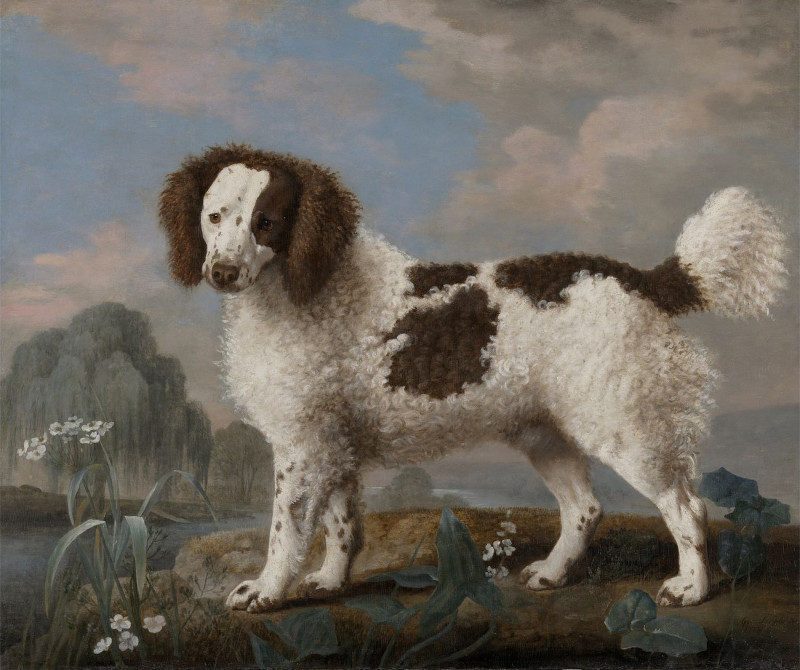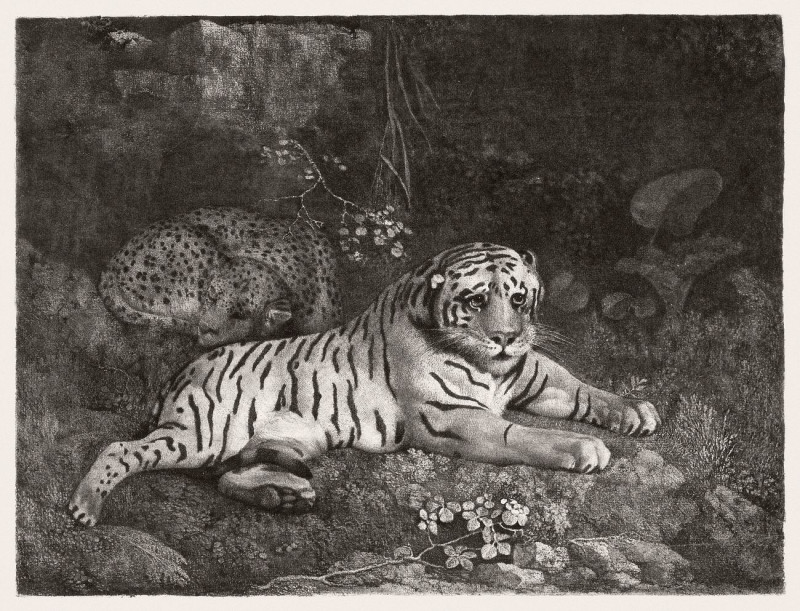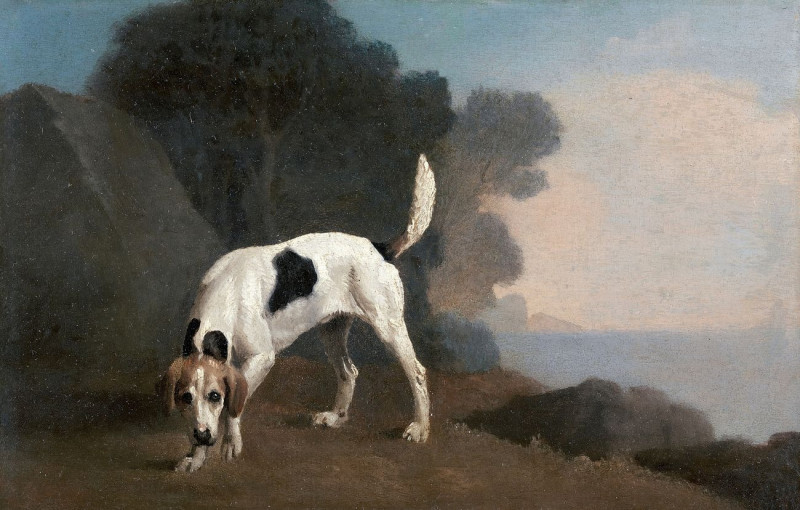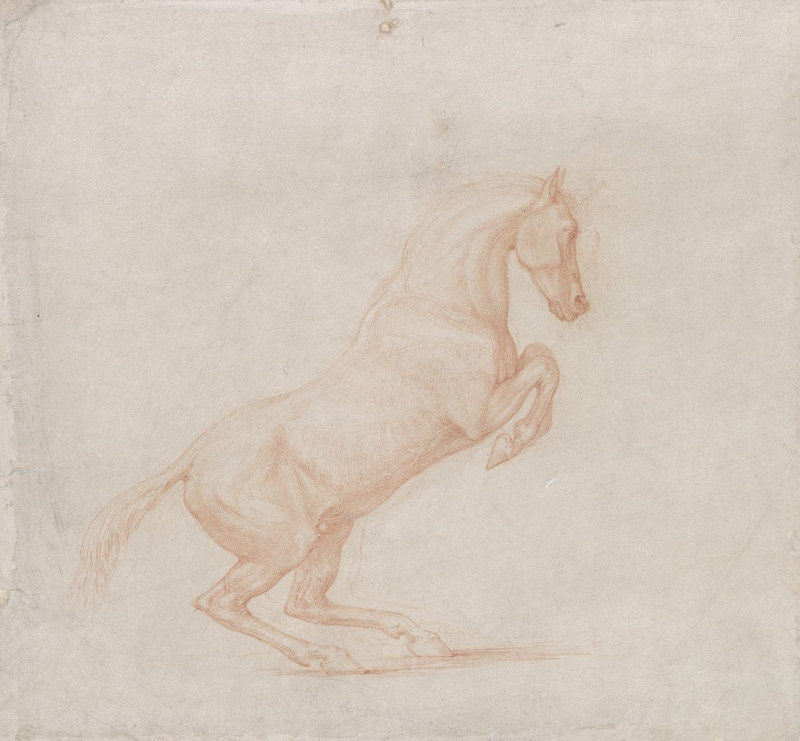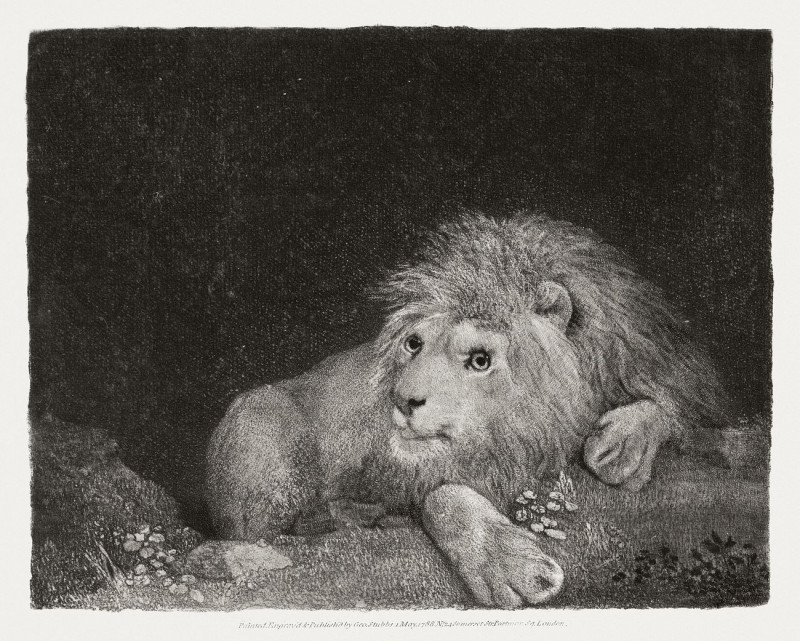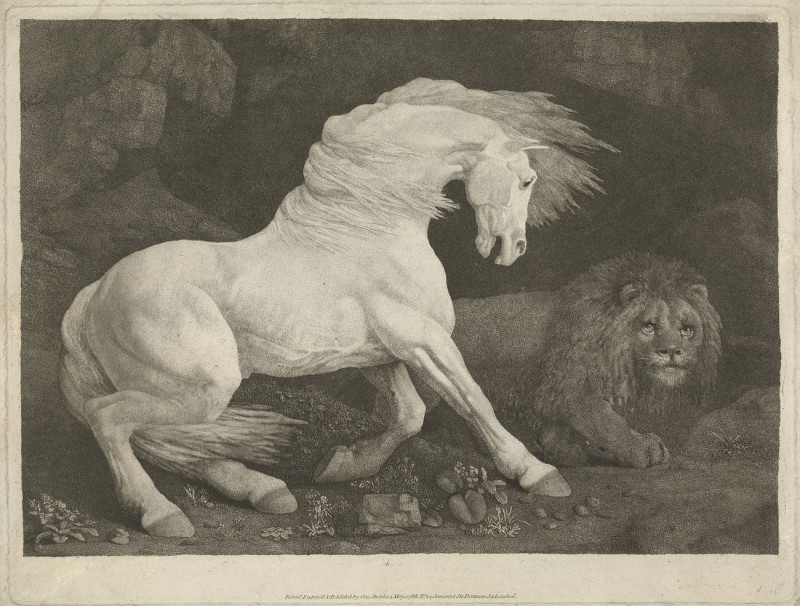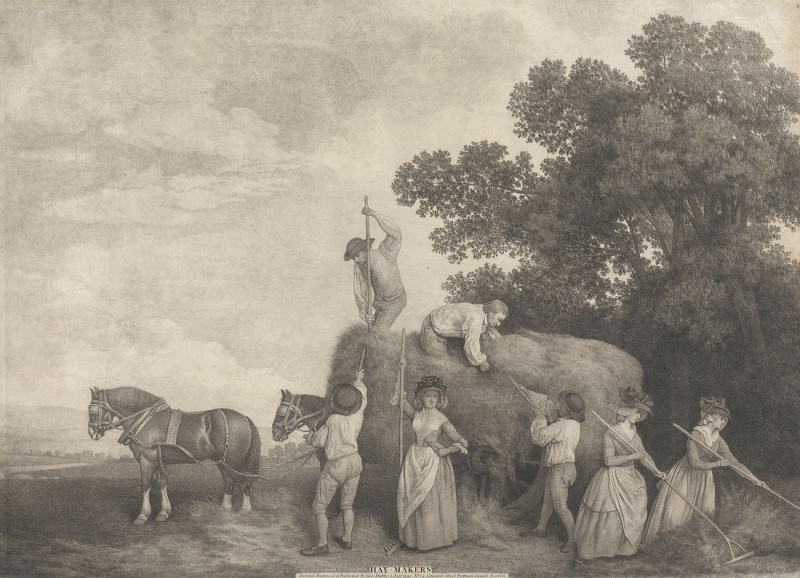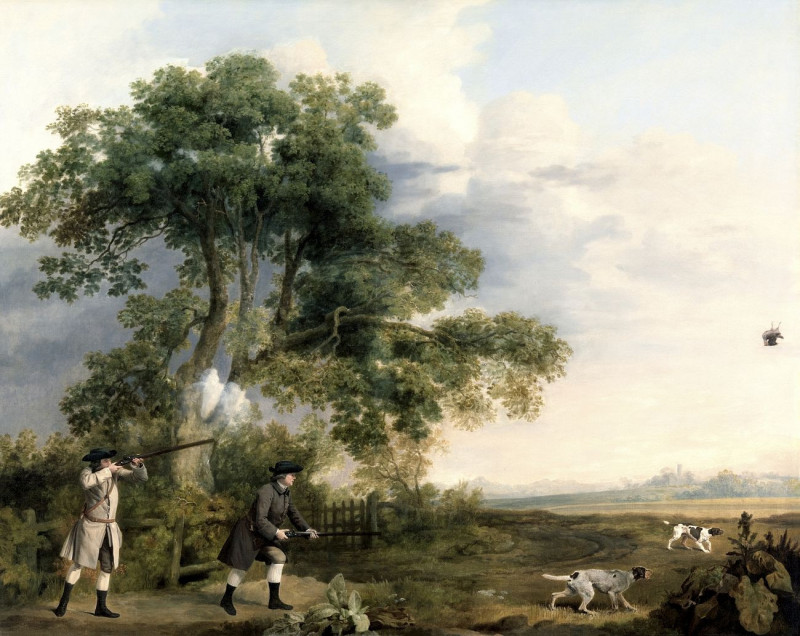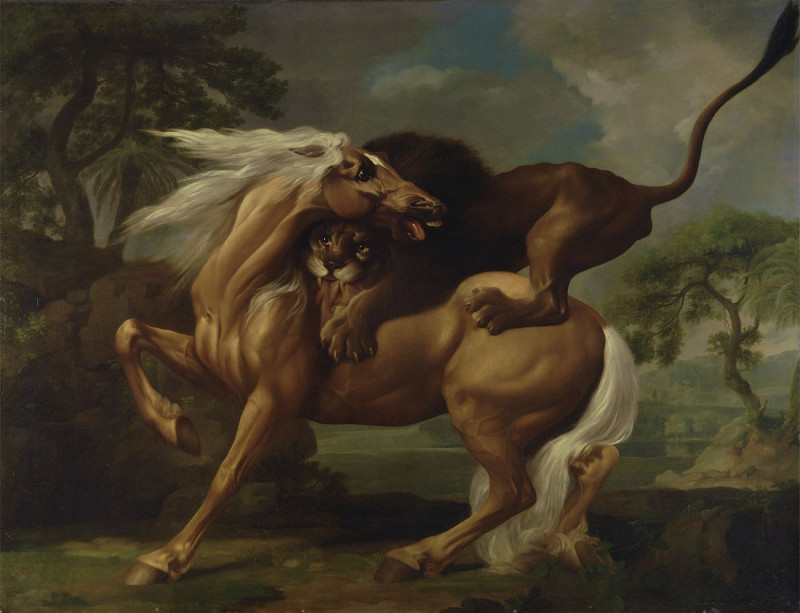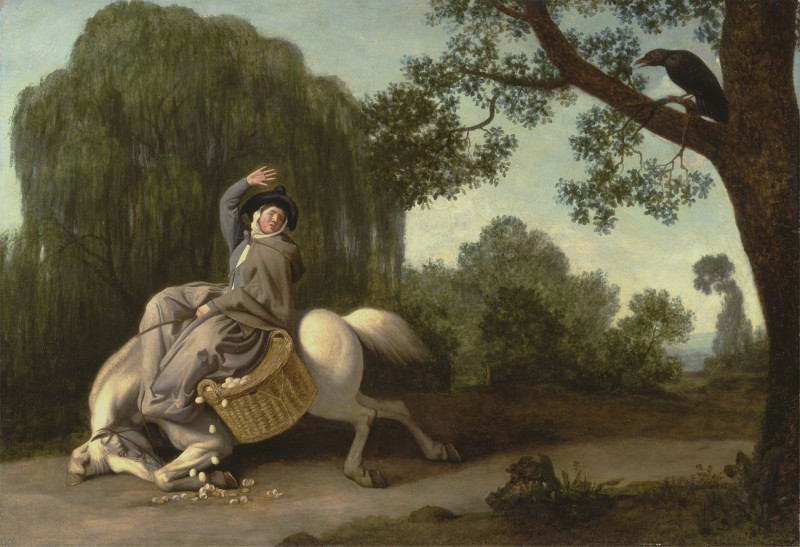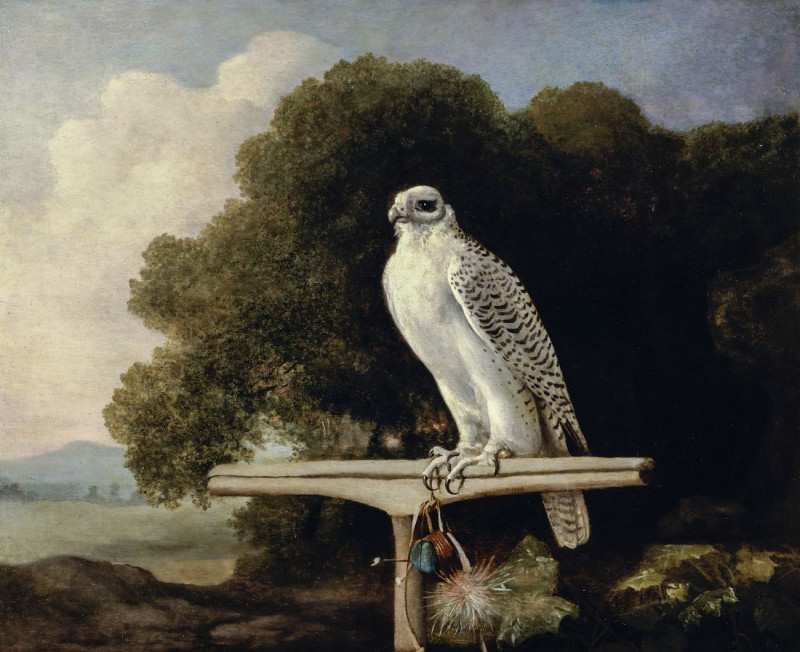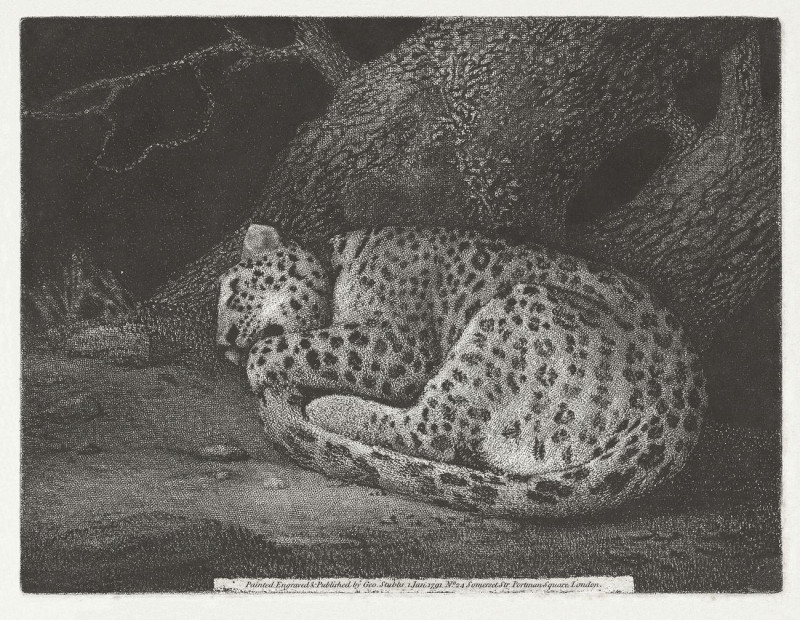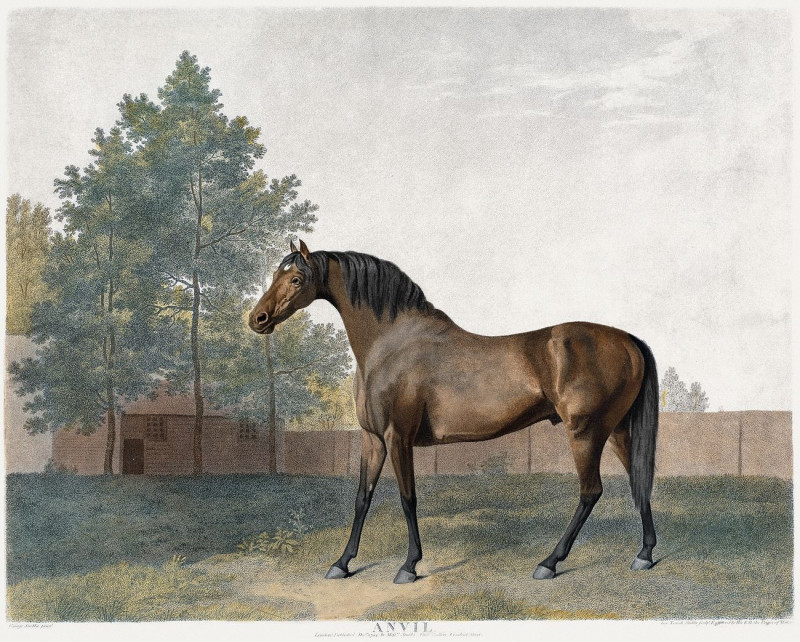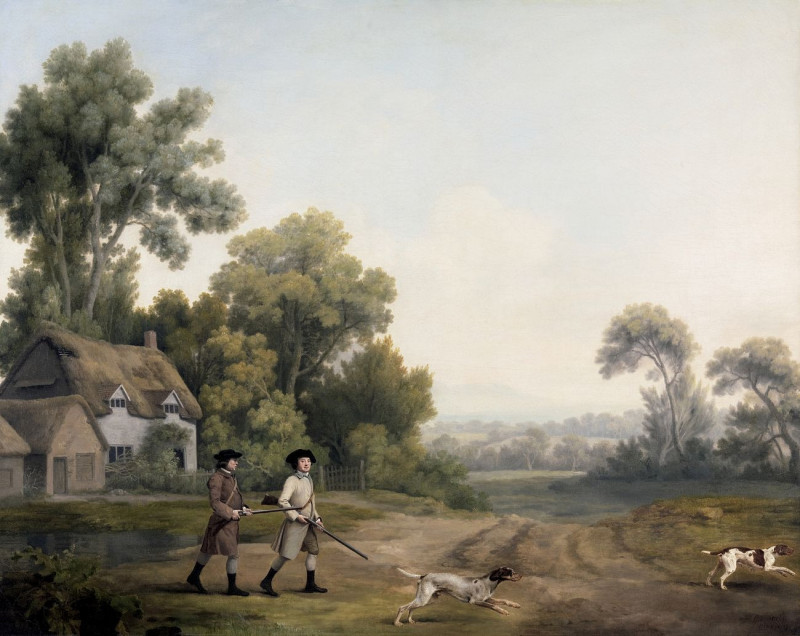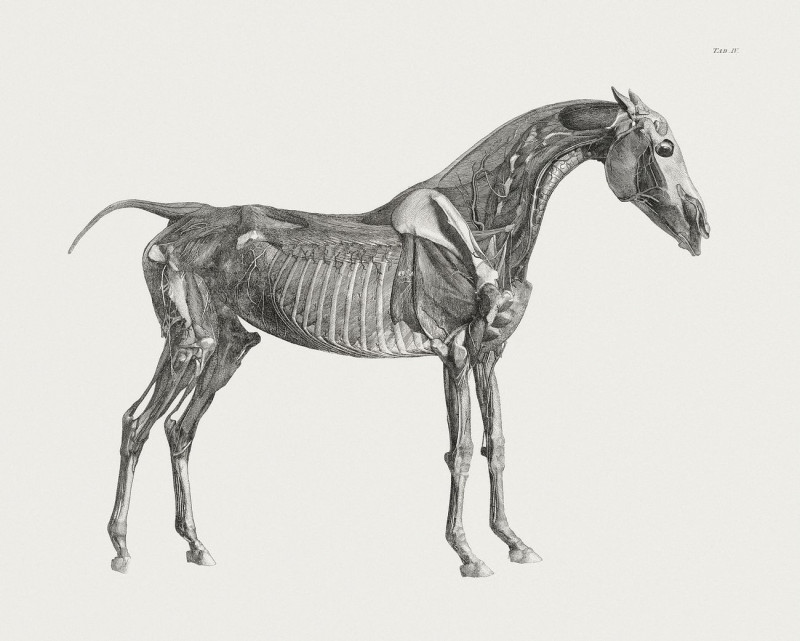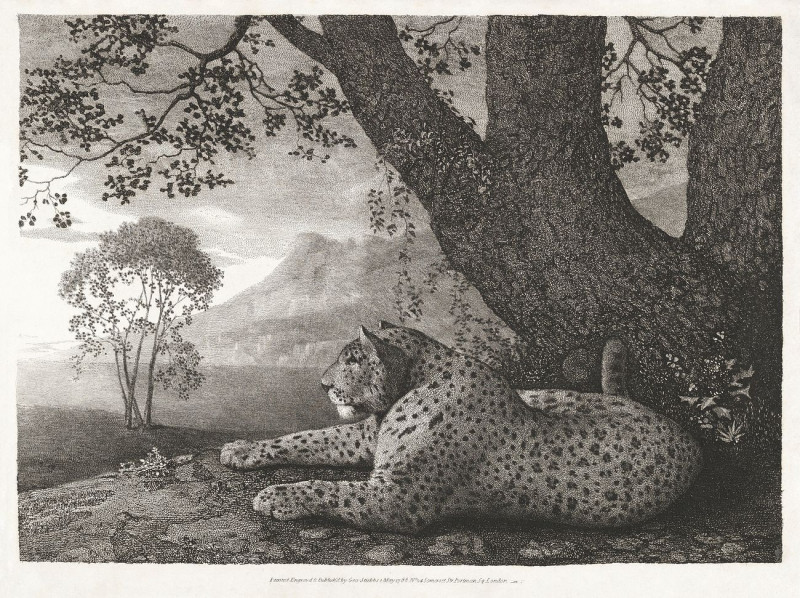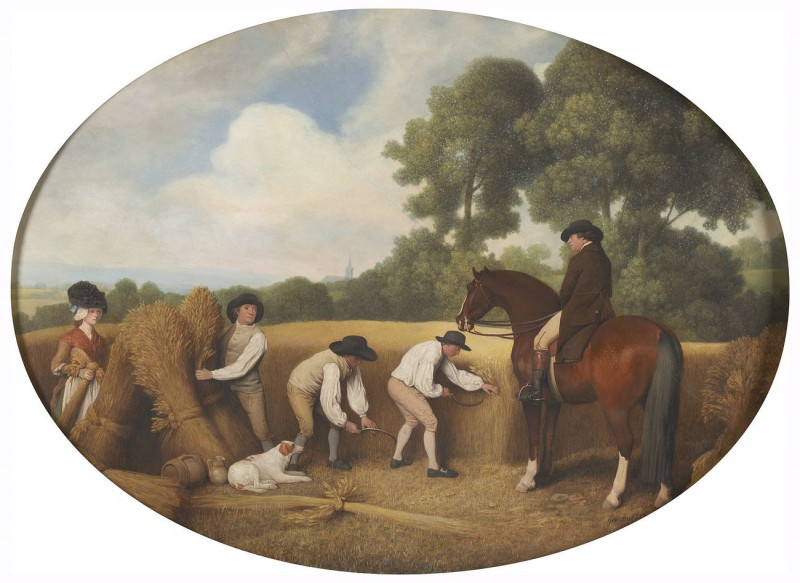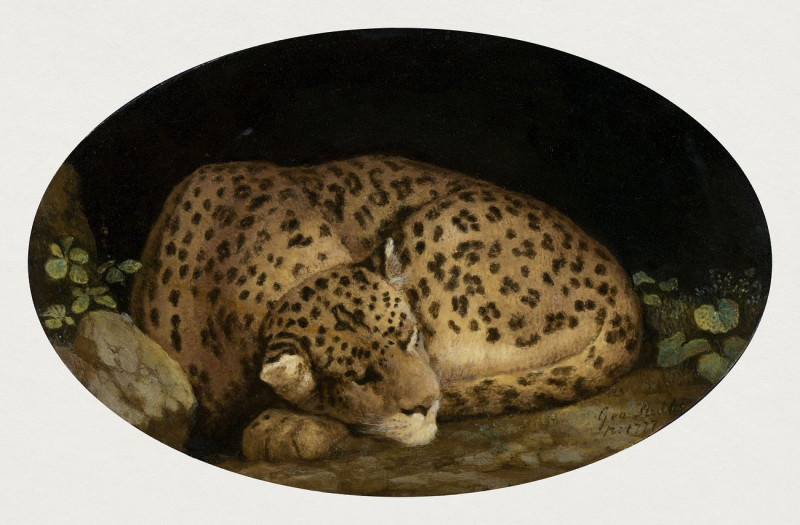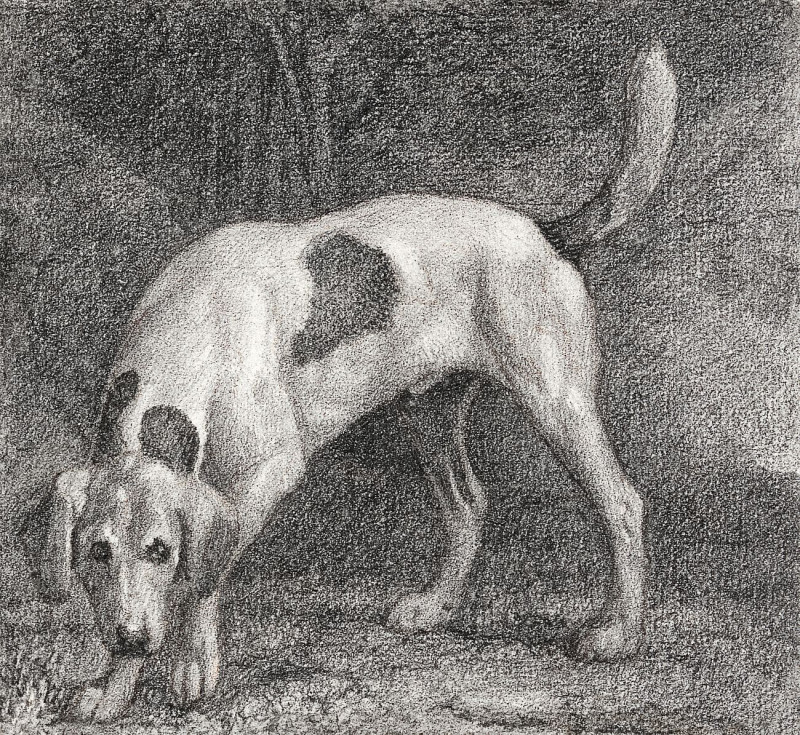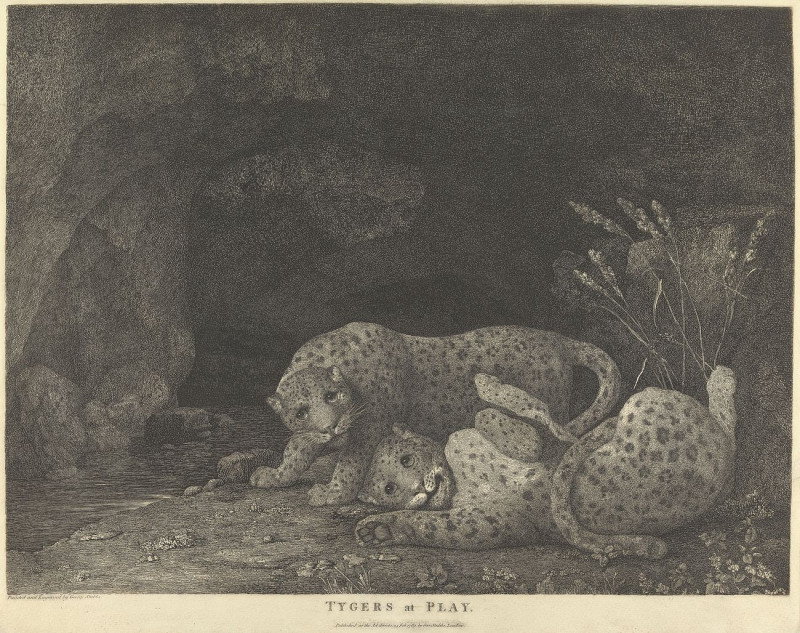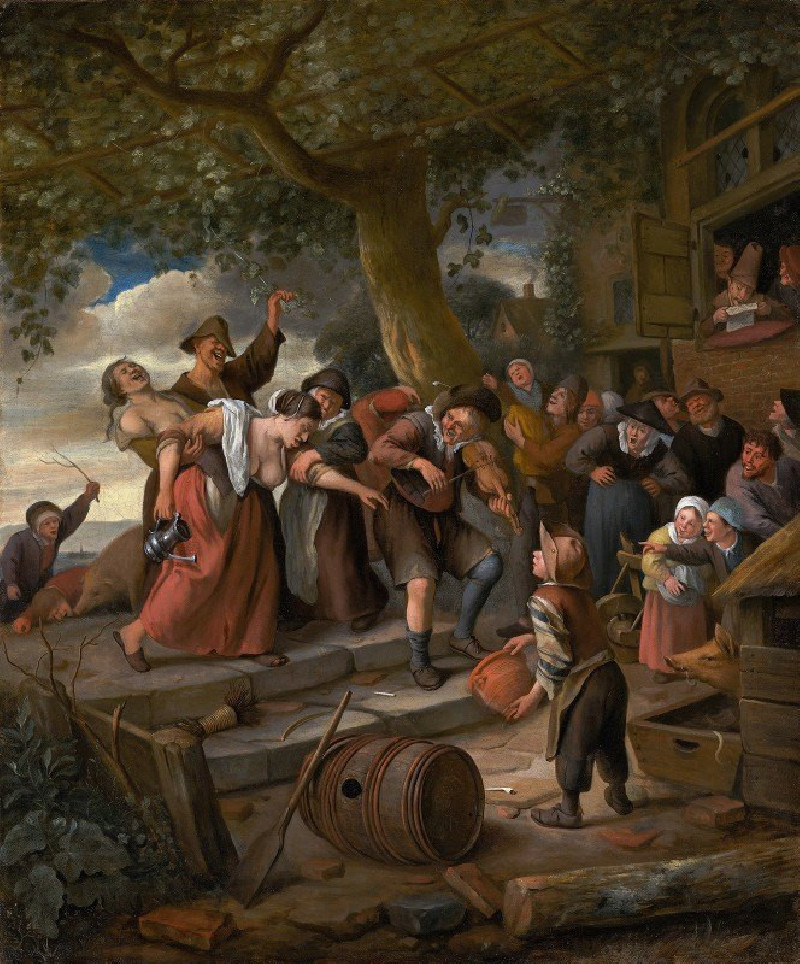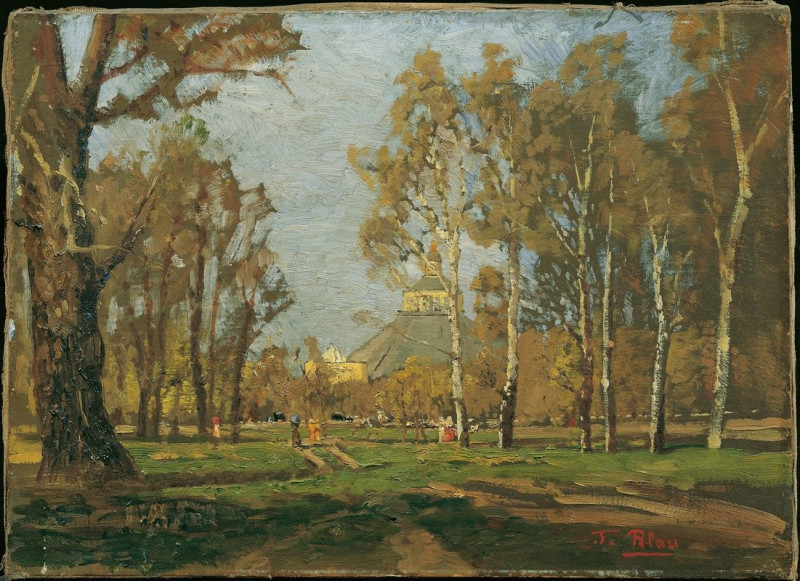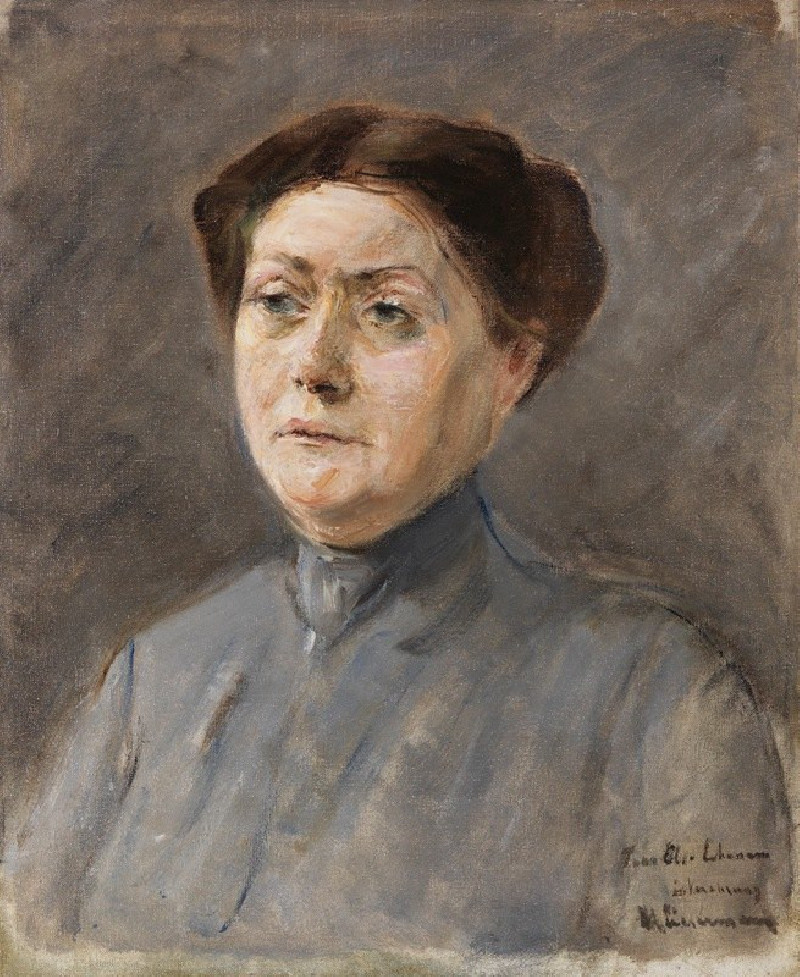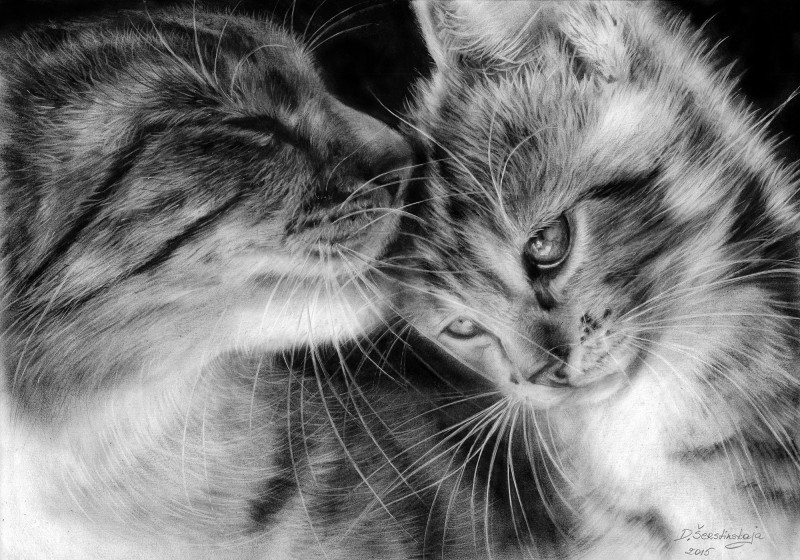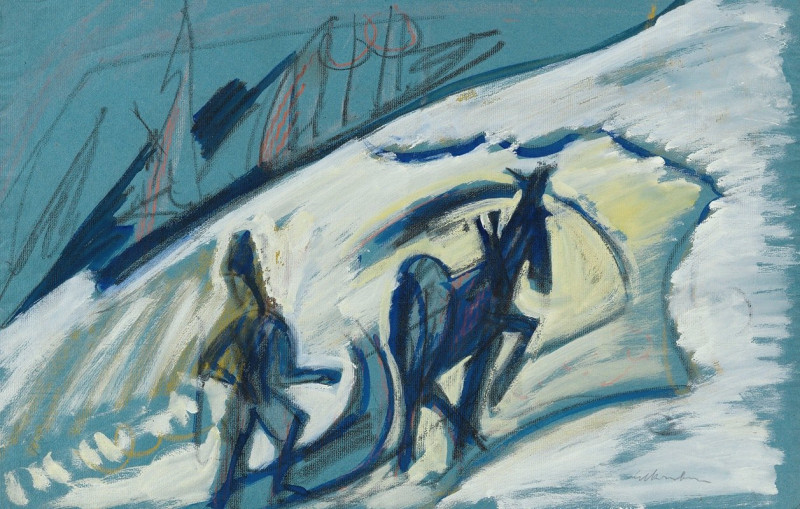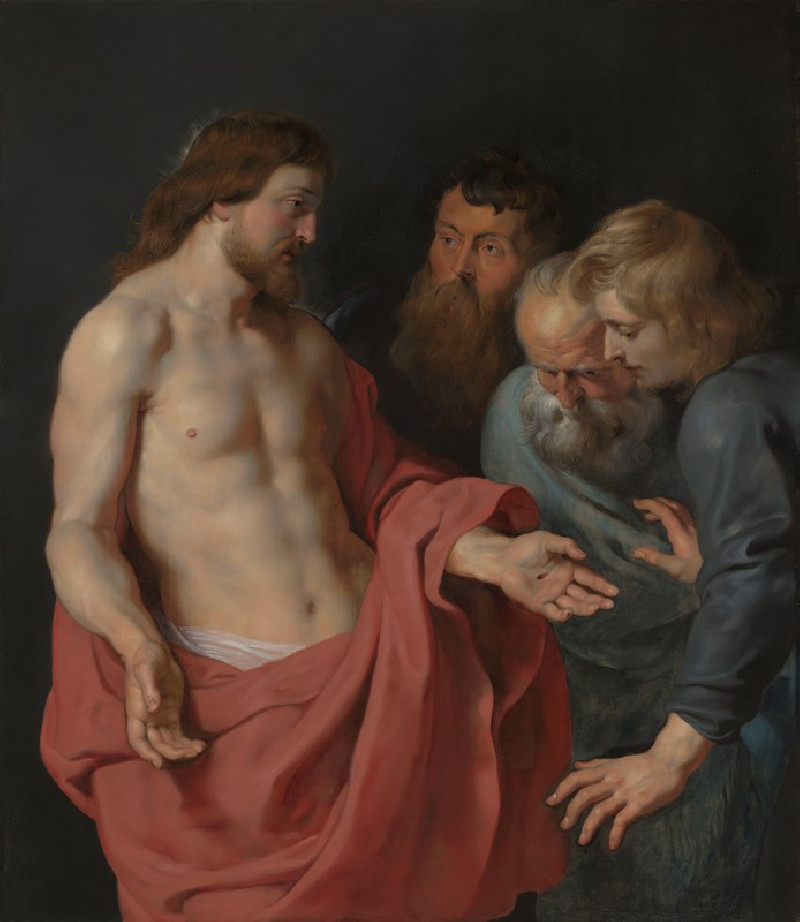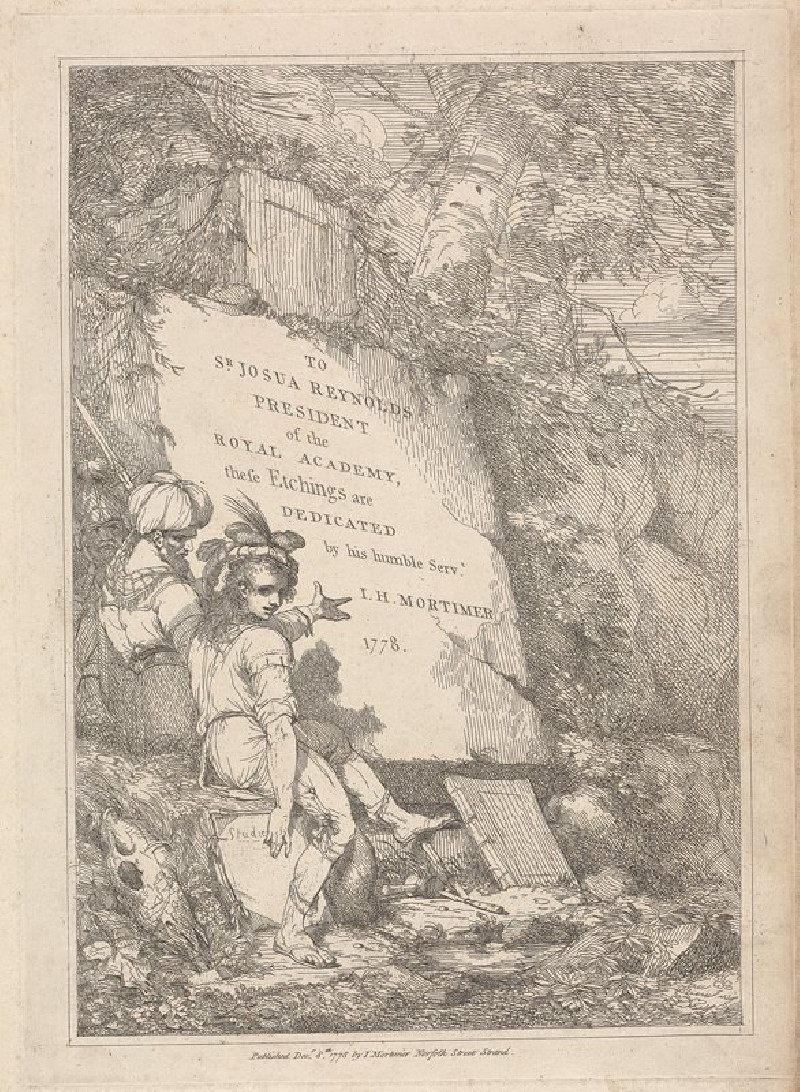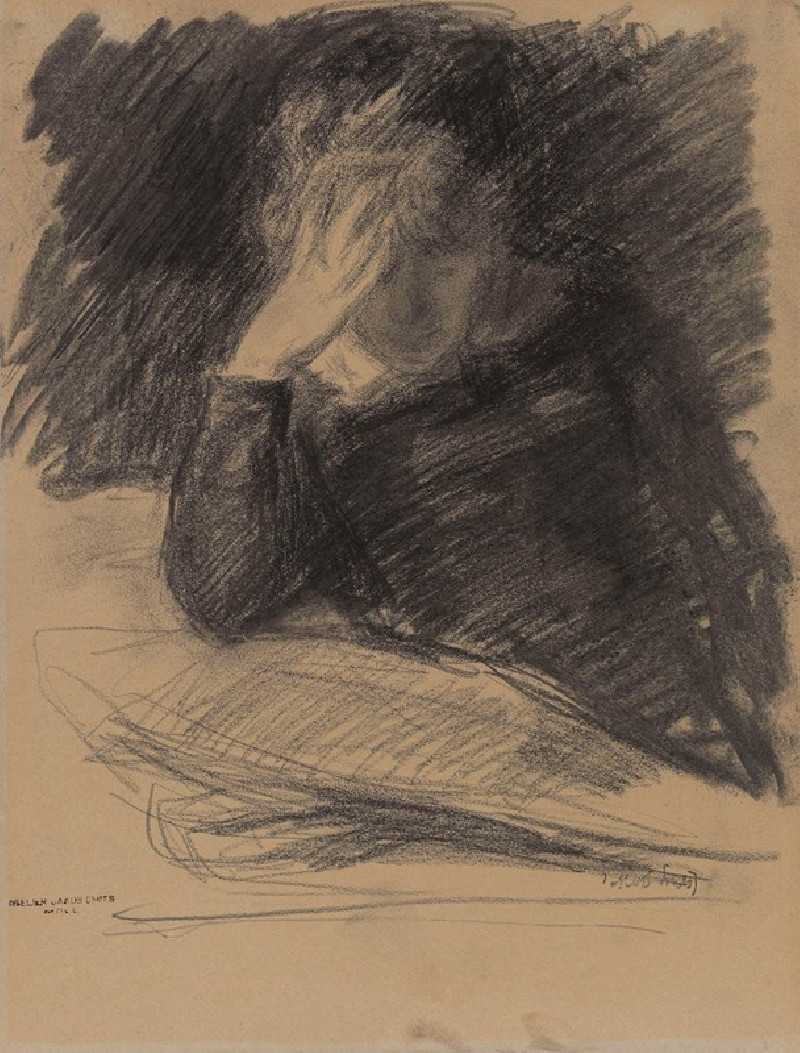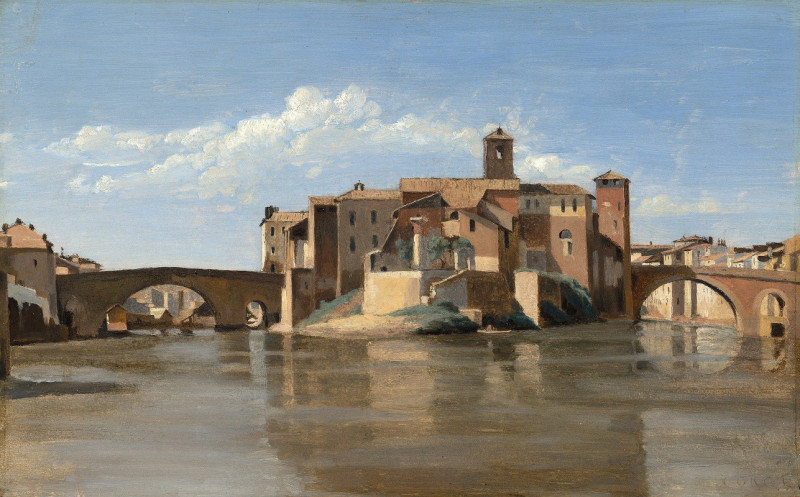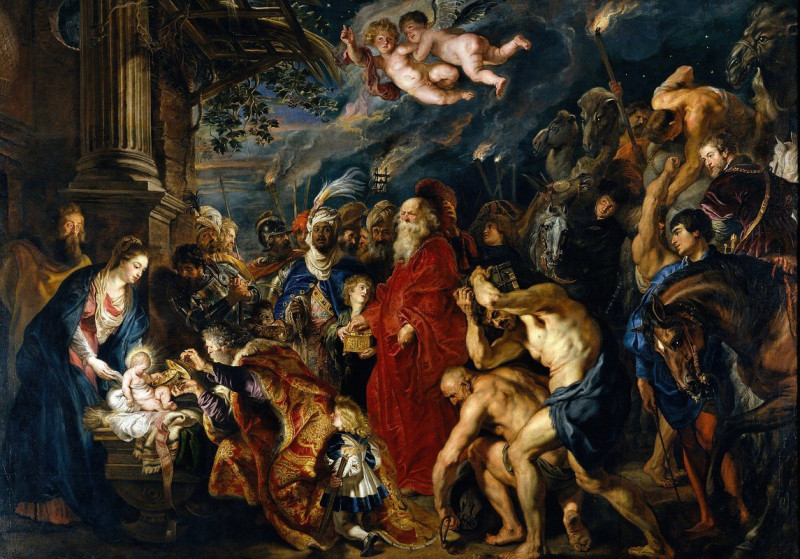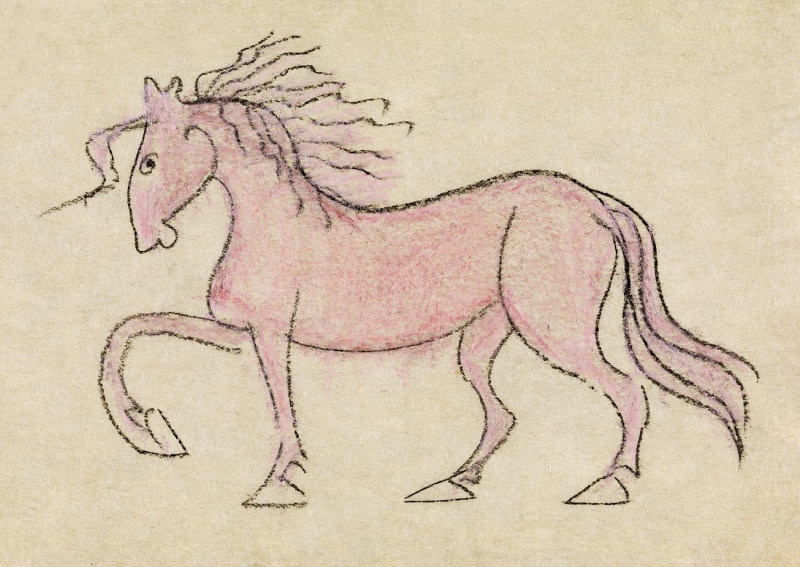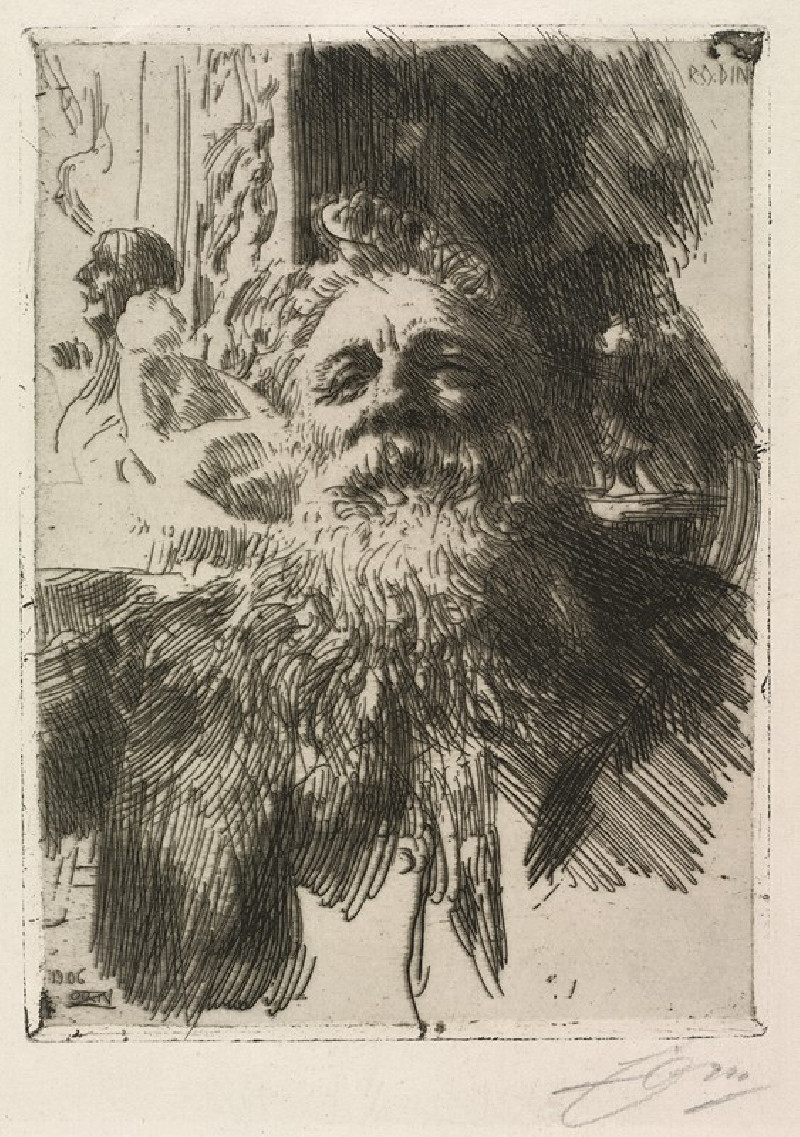The Countess Of Coningsby In The Costume Of The Charlton Hunt
Technique: Giclée quality print
Recommended by our customers
More about this artwork
This painting by George Stubbs, titled "The Countess of Coningsby in the Costume of the Charlton Hunt," portrays an elegant scene of aristocratic leisure in the 18th century. The artwork features a woman, identified as the Countess of Coningsby, dressed in a stylish hunting costume typical of the period. She is riding a richly toned chestnut horse, which is depicted in motion, captured in a side profile that highlights Stubbs' skill in equine anatomy and movement.The Countess wears a dark blue riding habit adorned with gold buttons, paired with a wide-brimmed hat that complements her distinguished attire. Her posture is upright and composed, suggesting a mix of nobility and the active lifestyle of an adept horsewoman.In the background, a pastoral landscape stretches out, painted with soft, naturalistic details. A small dog trots alongside the horse, adding a dynamic element to the composition. This setting, with its serene sky and hints of lush greenery, typical of Stubbs’ works, helps convey a sense of peacefulness and the aristocratic pleasure of hunting pursuits.Stubbs' expertise in depicting horses, combined with his ability to capture the refined clothing and composed demeanor of his subjects, makes this painting not only a visual delight but also a fascinating glimpse into the social and cultural practices of the time.
Delivery
Returns
George Stubbs (25 August 1724 – 10 July 1806) was an English painter, best known for his paintings of horses. Self-trained, Stubbs learnt his skills independently from other great artists of the 18th century such as Reynolds and Gainsborough. Stubbs' output includes history paintings, but his greatest skill was in painting animals, perhaps influenced by his love and study of anatomy. His series of paintings on the theme of a lion attacking a horse are early and significant examples of the Romantic movement that emerged in the late 18th century. He enjoyed royal patronage. His painting, Whistlejacket hangs in the National Gallery, London.



